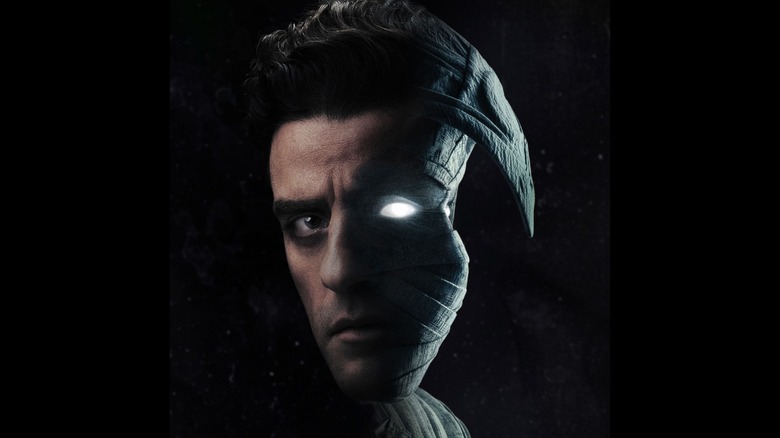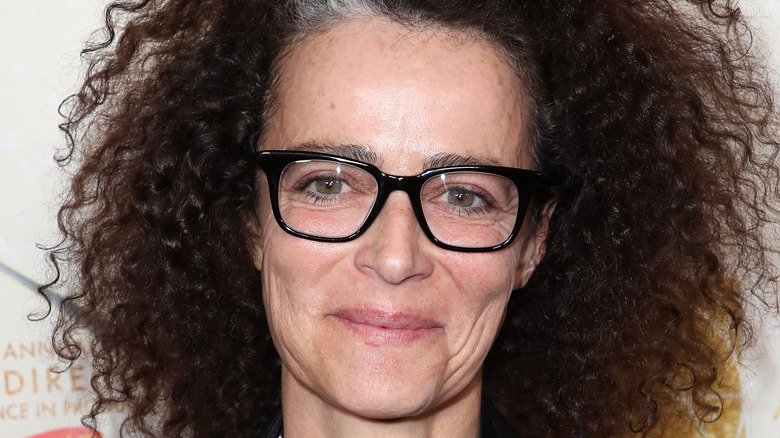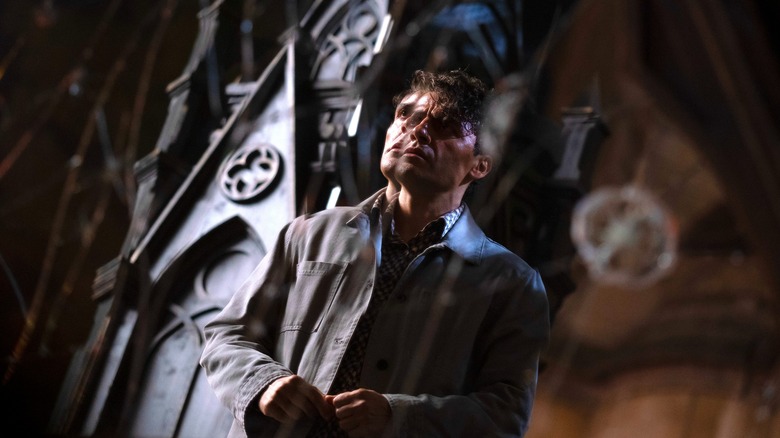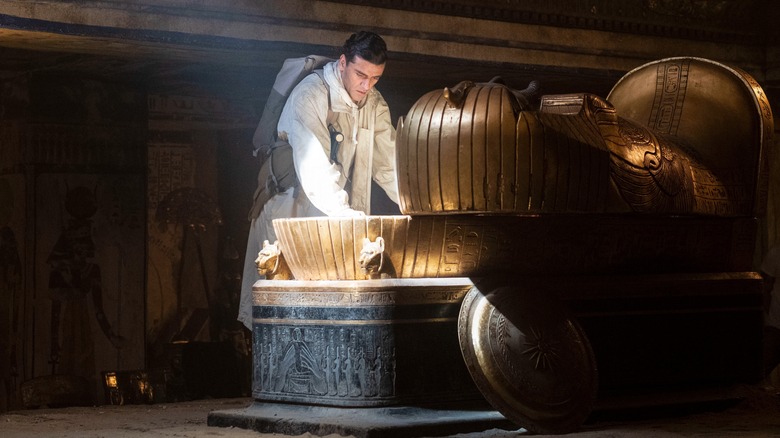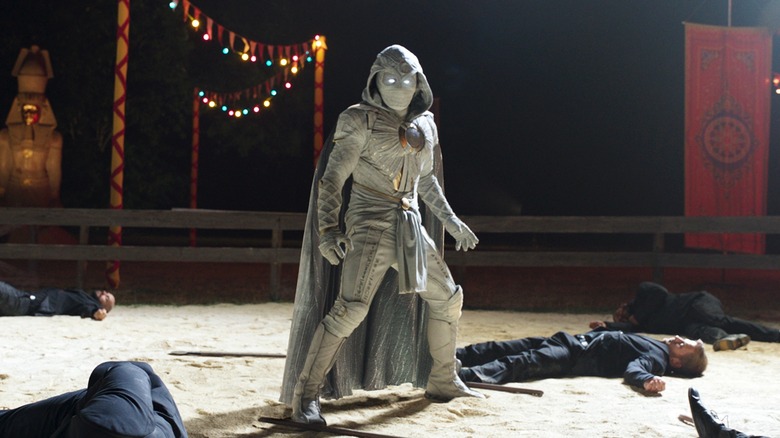Production Designer Stefania Cella Takes Us Behind The Scenes Of Moon Knight - Exclusive Interview
The production of Marvel Studios' latest series "Moon Knight" is notable for many reasons, including the stellar performance of star Oscar Isaac in two decidedly different roles. As any good actor would tell you, their performances are greatly informed by the work of their fellow actors and the settings that surround them to help bring their scenes to life.
The artist largely responsible for those settings in "Moon Knight" is acclaimed production designer Stefania Cella, who kicked off her Hollywood career with the hit ABC drama "Once and Again" in 1999. Film work quickly followed, with Cella's feature debut as a production designer on the Denzel Washington crime thriller "John Q." Since then, Cella has brought her artistic talents to several genres, including the Johnny Depp crime drama "Black Mass" in 2015 and Matt Damon's sci-fi fantasy drama "Downsizing" in 2017, yet she never landed a comic book film. That all changed this year when Cella did the production design on Jared Leto's supervillain movie "Morbius," as well as "Moon Knight" for the Marvel Cinematic Universe.
Streaming exclusively on Disney+, "Moon Knight" follows the harrowing plight of Marc Spector (Isaac), a former Marine and mercenary who, due to his struggles with dissociative identity disorder, lives part of his life as former Egyptian museum gift shop clerk Steven Grant. When Marc's persona tries to make a breakthrough to Steven's consciousness, he discovers that they are the avatar for Khonshu (voice of F. Murray Abraham), the Egyptian god of the Moon. As Khonshu's avatar, Marc has the ability to summon the suit and powers of the superhero Moon Knight, who is desperately needed to stop a dangerous cult leader, Arthur Harrow (Ethan Hawke), from awakening the Egyptian god Ammit to wreak havoc across the planet.
"Moon Knight" features several elaborate settings, from the bustling streets of London to stunning vistas and the world's wonders in Cairo. Cella sat down with Looper for an exclusive interview to share how she helped bring the look of "Moon Knight" to life.
Keeping things practical
The production of "Moon Knight"— it's gorgeous stuff. It's so amazing, having done this for several years, how I'm trying to delineate what is practical and what is CGI. If you could break down the percentage of me, how much are practical settings and how much is computer generated — and does that even makes a difference as far as your process is concerned?
Episode 1 has almost everything on camera because there are locations and the apartment is a set. We start to get [visual effects] when he's turning into Moon Knight. There was a costume, but then the transformation is a visual effect, but the spaces were real. The museum was built in an empty space. We built all the statues. The chamber of the gods was built up to 35 feet. I would say that 60%, 70% is on camera. Then, when they start to go up, that's CGI and Cairo, the Cairo set was a back lot. The main street is built and then the extension in the distance are set extensions. So far, up through the first four episodes, a lot is on camera.
A leap into the superhero genre
The majority of your work to this point, really, has consisted of drama and some science fiction, yet it seems now, all of a sudden, you've leaped into Marvel Comics material, whether it be with "Morbius" and "Moon Knight," and you have "Blade" on the way. Is it just by mere happenstance you landed in the superhero genre or is it one area that you've always been looking to become a part of?
I've haven't always been looking to be part of it. I studied theater and come from theater. I've dealt with symbolism and changing reality, so that is very similar to superheroes. Because we have just one stage and we have to describe a character and tell a story with just a few pieces, I found that theater is a bridge that's actually closer to a superheroes than a drama. It was a point after several years of developing work on certain subjects [that] I was attracted to try to challenge myself on grounds that I didn't know. "Downsizing" was the first one, and then it started to open doors. I did "Morbius" with director Daniel Espinosa. He's a very grounded director, so we did that journey together, exploring this new language.
Entering Ammit's tomb
When it came to hiring you for "Moon Knight," do you know if Kevin Feige and Mohamed Diab looked at any of your previous work and said, "We would love to see Stefania's work brought into our world." Do you know if that was the case?
I know Mohamed did. I'm sure the studios always approve or are interested in new artists. I don't know how to answer that, but I know Mohamed told me himself that the fact that I was coming from a more grounded background — and he was coming from a more grounded background — that he felt that he could lean on me, because I understood why he wanted so much stuff on-camera.
Is there a particular set piece in "Moon Knight" that you are most proud of? I'm thinking Amit's tomb has to be up there because it's incredible. Would that be the one or is there another one?
I don't have a preferable one, but what I loved about the tomb is that ... we shot in Hungary. There is a fantastic tradition in Hungary in art and crafts. They are fantastic artists. We called the arts university because we wanted to do stages of painting. They actually came — four or five of their students — and they helped us decorate the chambers, the Alexander [Sarcophagus] and the yellow leaves in the chamber. I loved that — seeing young people have the opportunity to actually walking onto set and having the experience. That, to me — since I'm a mother of a teenager — to give them that opportunity was great and very rewarding because they had a lot of fun.
Isaac says Cella's sets helped his character feel alive
I talked with Mohamed at the beginning of the series, as well as executive producer Grant Curtis, and Mohamed in particular said how great of a collaborator Oscar Isaac is. I'm wondering if you two shared any ideas about anything?
I know that he was very friendly and very complimentary, and very involved with me, but we didn't [collaborate much] ... He loved his apartment, but he didn't ask me anything in particular of me. I know that he told me several times that he felt his character was alive when he was coming into the sets. Also, I have to say this is might not be relevant, but during the pandemic, we did not have the contact than we normally have. It was a little bit remotely, we had to do with Zoom. It wasn't like, "Okay, let's go in a room like we used to do or we going to start to do again." It was like that a little bit, so I was part of that process. We were all part of the process, but I know Mohamed spent a lot of time with him. I saw him on set, but it was very different at that time.
I know, again, it's early, very early, in the production phases for Marvel Studios' "Blade," but is there anything that you can share with me about your work at this point with that film?
I can't talk about it ... I can tell you that I love it!
"Moon Knight" is streaming exclusively on Disney+, with the series finale premiering on Wednesday, May 4.
This interview was edited for clarity.
